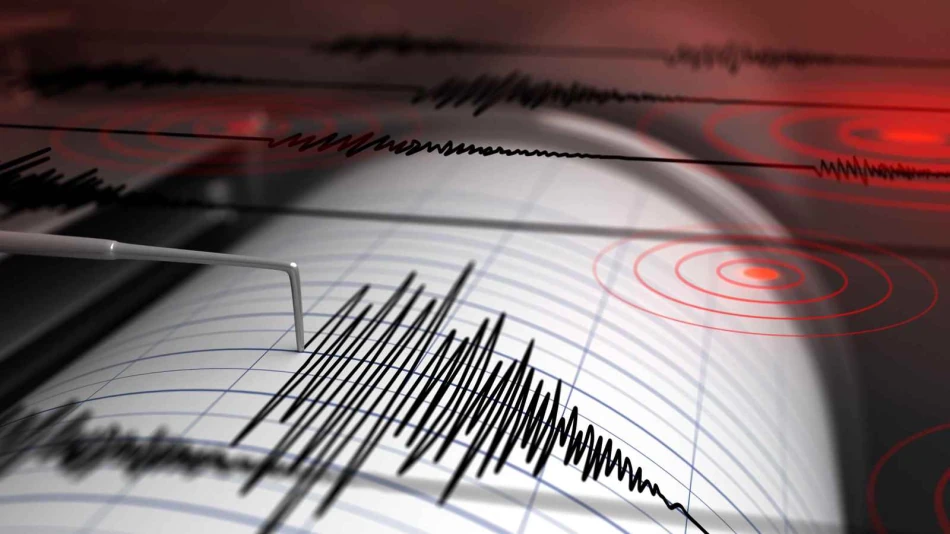
Powerful Earthquake Shakes Eastern Russia, Triggering Tsunami - The Strongest in Decades
Massive 8.8 Earthquake Strikes Russia's Kamchatka Peninsula, Triggering Pacific-Wide Tsunami Alert
A devastating 8.8-magnitude earthquake has rocked Russia's remote Kamchatka Peninsula, generating tsunami waves up to four meters high and prompting emergency evacuations across the Pacific Rim. The seismic event—the strongest to hit the region in over seven decades—has injured several people in Russia while triggering massive coastal evacuations from Japan to Hawaii, underscoring the interconnected vulnerability of Pacific nations to natural disasters.
The Immediate Impact: Russia Bears the Brunt
The earthquake struck at a depth of 19.3 kilometers, with its epicenter located approximately 119 kilometers from Petropavlovsk-Kamchatsky, a city of 165,000 residents. Kamchatka Governor Vladimir Solodov described it as "the strongest in decades," while regional emergency officials confirmed tsunami waves reaching three to four meters in height along parts of the peninsula's coastline.
The human toll, while not catastrophic, highlights the sudden chaos such events create. Regional Health Minister Oleg Melnikov reported multiple injuries, including people hurt while fleeing buildings and one patient who jumped from a hospital window. In the port city of Severo-Kurilsk on Sakhalin Island, tsunami waters flooded parts of the harbor and a fish processing plant, forcing evacuations.
Infrastructure Holds, But Concerns Remain
Despite the earthquake's massive magnitude, most buildings in the region withstood the shaking—a testament to Russia's earthquake-resistant construction standards in seismically active zones. However, a kindergarten sustained damage, and the psychological impact on residents cannot be understated in a region where such powerful quakes are rare.
Japan's Traumatic Memories Resurface
For Japan, the earthquake immediately evoked memories of the catastrophic 2011 Tōhoku earthquake and tsunami that killed nearly 20,000 people and triggered the Fukushima nuclear disaster. Evacuation orders were issued for much of Japan's eastern coastline, with tsunami warning sirens blaring across Pacific-facing communities.
The response was swift and comprehensive. Tokyo Electric Power Company evacuated workers from the Fukushima nuclear plant as a precautionary measure, while fishing boats rushed out of harbors to avoid potential damage from incoming waves. Television footage showed dozens of people taking shelter on rooftops in northern Hokkaido, a stark reminder of how quickly coastal populations must react to tsunami threats.
Chief Cabinet Secretary Yoshimasa Hayashi reported no immediate injuries or damage in Japan, and crucially, no disruptions at nuclear power facilities—a relief given the country's nuclear safety concerns following 2011.
Pacific-Wide Alert System Demonstrates Global Preparedness
The earthquake's impact extended far beyond the immediate region, triggering the Pacific Tsunami Warning System that has evolved significantly since the 2004 Indian Ocean tsunami. Warnings were issued for locations thousands of miles away, including Hawaii, Chile, Ecuador, and the Solomon Islands.
Hawaii Takes No Chances
Hawaiian authorities ordered coastal evacuations, with Honolulu's emergency management agency urging residents to "Move! Destructive tsunami waves are expected." The warning advised people in low-lying areas to seek higher ground or move to at least the fourth floor of buildings—protocols refined through decades of Pacific tsunami experience.
President Donald Trump acknowledged the threat on social media, confirming tsunami warnings for Hawaii, Alaska, and the U.S. Pacific coast, demonstrating how such events quickly escalate to presidential-level attention.
The Ring of Fire Strikes Again
This earthquake serves as a powerful reminder of the Pacific Ring of Fire's volatile nature. Kamchatka Peninsula sits squarely within this geologically active zone, where tectonic plate movements regularly generate major earthquakes and volcanic eruptions. The Russian Academy of Sciences confirmed this was the strongest earthquake to hit the region since 1952.
Daniela Chebrov, director of the Kamchatka branch of the Geophysical Survey, noted that while the earthquake's magnitude was enormous, the shaking intensity was somewhat moderated by the characteristics of its epicenter. Her assessment that aftershocks would continue but likely not exceed the main quake provides some reassurance to rattled communities.
Lessons in Modern Disaster Response
The global response to this earthquake demonstrates how disaster preparedness has evolved in the 21st century. Unlike past decades when remote earthquakes might have caught distant populations off-guard, today's interconnected warning systems, social media communications, and refined evacuation protocols likely prevented what could have been a far more devastating human toll.
The fact that no major casualties were reported across the Pacific—despite the earthquake's massive magnitude—suggests that investments in early warning systems, building codes, and public education are paying dividends. However, it also underscores the ongoing vulnerability of coastal populations worldwide to seismic events originating thousands of miles away.
As aftershocks continue to rattle Kamchatka and communities across the Pacific assess their response, this earthquake serves as both a test of current preparedness systems and a reminder that the Ring of Fire remains one of Earth's most unpredictable and potentially devastating natural phenomena.
 Sara Khaled
Sara Khaled







